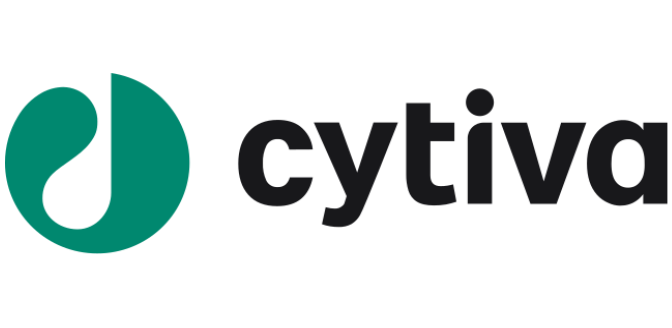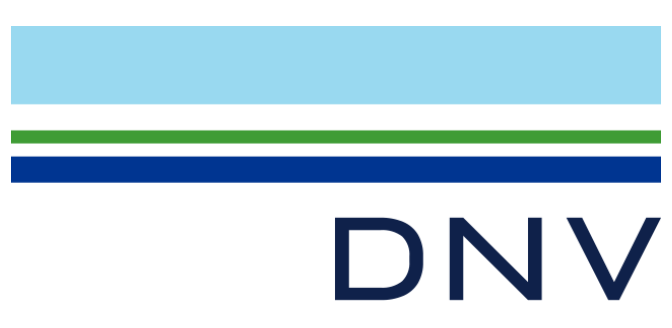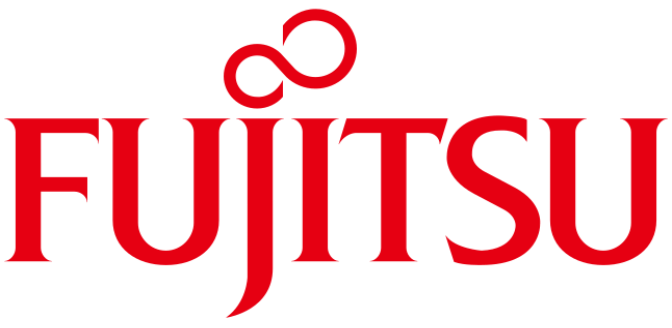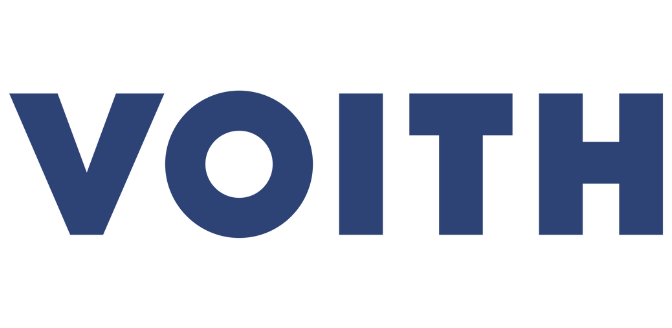Hogan Lovells: The Litigation Landscape
Law firm Hogan Lovells reveals new insight into technology risk, and how to prevail when technology fails

Businesses need technology. But this unquestionable reliance on tech presents companies with significant operational, financial, reputational and regulatory risks. Whilst these risks are nothing new, Hogan Lovells knew more insight was needed on tackling these dangers, for their clients and the wider industry.
Primary research presented the ideal route to gain this insight, so Hogan Lovells and FT Longitude joined forces to survey 550 businesses as part of a content programme designed to deepen the law firm’s expertise in the area of technology risk beyond a purely legal standpoint. The campaign boosted the firm’s profile for technology-related disputes, and sparked conversations that generated meetings with some of Hogan Lovells’ most important clients and prospects.
of top clients engaged by key findings report
Intelligence
The research findings were striking. The necessity for technology in growing business shouldn’t be overstated: 61% of surveyed businesses say the development and/or deployment of technology is now core part of their growth strategy, yet just 9% of board members look at technology risk “to a significant extent” and only 31% of businesses involve their legal teams in creating their cybersecurity incident response plans.
Whilst the survey findings highlight the threat businesses face, the content we created instead focuses on providing actionable ideas that businesses can apply to mitigate the risk. The four principles outlined in the report businesses need to recognise are:
- It is a boardroom issue
- Legal involvement is central
- Risks need monitoring throughout
- You’re only as strong as your weakest third party
Whilst technology risk is unavoidable, The Litigation Landscape aims to prove that by following these key principles companies can be ready to sidestep any threat if the worst should happen.
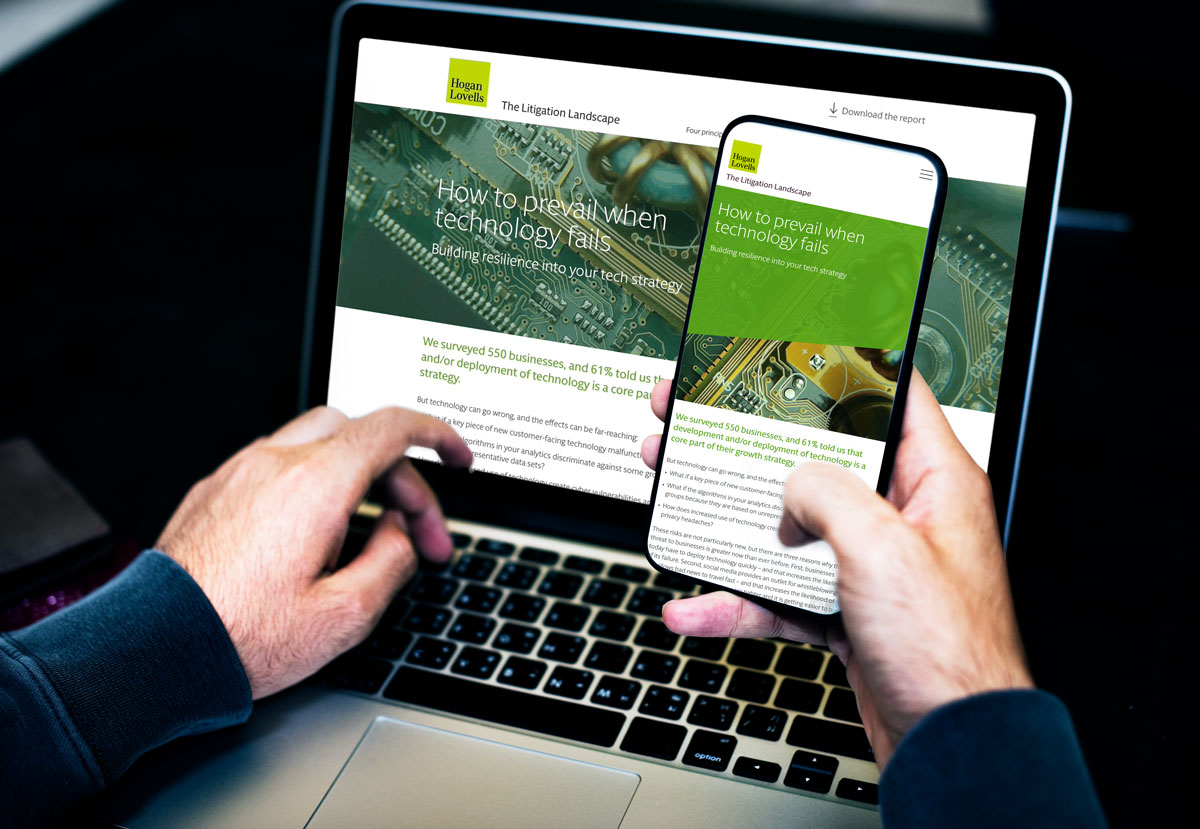
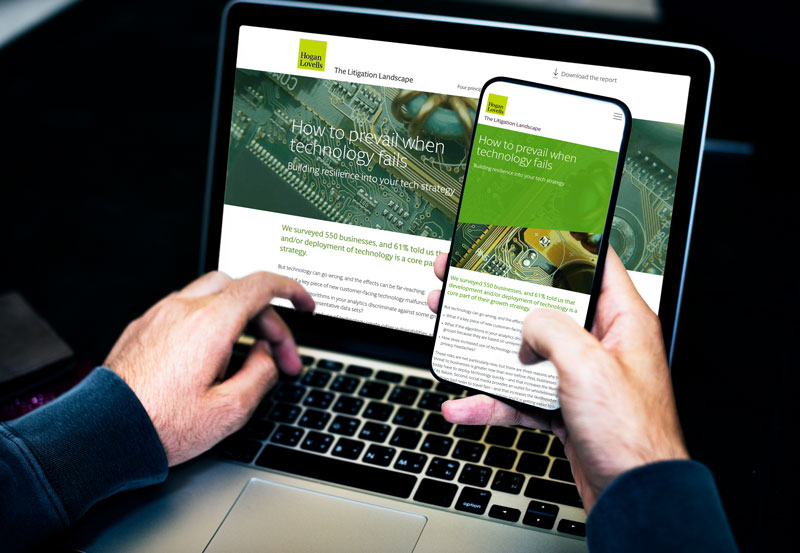
Influence
Launched on a dedicated, interactive content site, the six chapters of insight use storytelling, copywriting and design techniques that encourage the reader to explore the content in both a linear and non-linear way. The ultimate content asset, a vibrant and detailed 48-page report, is presented digitally balancing thoughtful editorial with eye-catching data visualisation.
The style of content and insight was carefully considered in order to appeal to audiences at all levels and roles within an organisation. Blending critical information with practical, actionable takeaways, these two styles of writing work hand in hand to complete a well-rounded thought leadership experience for the reader.






 Back
Back

 Book a meeting
Book a meeting
 Book a meeting
Book a meeting







